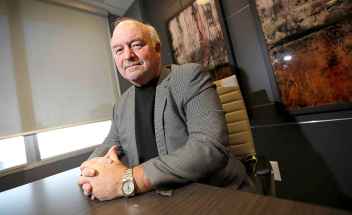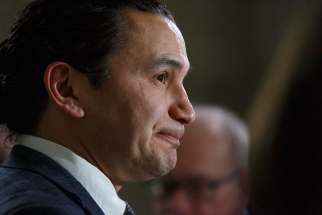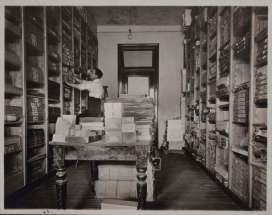Winnipeg’s Whiteout has nothing to do with race but should be handled with care
Read this article for free:
or
Already have an account? Log in here »
To continue reading, please subscribe:
Monthly Digital Subscription
$0 for the first 4 weeks*
- Enjoy unlimited reading on winnipegfreepress.com
- Read the E-Edition, our digital replica newspaper
- Access News Break, our award-winning app
- Play interactive puzzles
*No charge for 4 weeks then price increases to the regular rate of $19.00 plus GST every four weeks. Offer available to new and qualified returning subscribers only. Cancel any time.
Monthly Digital Subscription
$4.75/week*
- Enjoy unlimited reading on winnipegfreepress.com
- Read the E-Edition, our digital replica newspaper
- Access News Break, our award-winning app
- Play interactive puzzles
*Billed as $19 plus GST every four weeks. Cancel any time.
To continue reading, please subscribe:
Add Free Press access to your Brandon Sun subscription for only an additional
$1 for the first 4 weeks*
*Your next subscription payment will increase by $1.00 and you will be charged $16.99 plus GST for four weeks. After four weeks, your payment will increase to $23.99 plus GST every four weeks.
Read unlimited articles for free today:
or
Already have an account? Log in here »
Hey there, time traveller!
This article was published 12/04/2019 (2432 days ago), so information in it may no longer be current.
Last week I saw Ted Nolan in the Winnipeg airport.
If you don’t know Nolan, he’s one of two Indigenous head coaches in NHL history. There may be more, of course, but no one else has talked about this openly.
Nolan is from Garden River First Nation and won the Jack Adams award for coaching the Buffalo Sabres in 1997. That off-season Sabres management, in an unprecedented move, forced him out. Nolan then sat unemployed for years, finally coaching overseas and for short stints with the New York Islanders and again with the Sabres. Many called Nolan’s treatment racist.

The second Indigenous bench boss?
Get ready, Jets fans.
It’s Craig Berube, the St. Louis Blues’ head coach. He’s Cree from Calahoo, Alta.
And that’s it.
The NHL is not a place of diversity.
Approximately 8,000 players (two-thirds from Canada) have skated on NHL teams in the league’s 100-plus years. About 80 of them have been Indigenous.
That’s one per cent.
It’s similar for other identifiable racial groups. There have been only about 70 African-Americans, including fan-favourite Jets defenceman Dustin Byfuglien, who is from Roseau, Minn.
The league doesn’t often share statistics on race, but a 2011 poll showed that 93 per cent of the players identified as white. That number is even higher among referees and management.
The NHL may have a campaign that says “Hockey is For Everyone” but the league is, and always has been, largely a white man’s game. At the same time, the NHL is beloved by people from all races, ethnicities and communities.
This is what makes this next part complicated.
On Wednesday, just before the Jets and Blues squared off in the first game of the opening round of the playoffs, a local, non-profit organization named Black Space Winnipeg posted on social media concerns they had regarding cultural and physical safety at the Whiteout street parties.
“Remember (that) a street party called a #whiteout does not make all Winnipeggers feel safe,” the post said.
Media were quick to pick up the story.
In a CBC interview, Black Space Winnipeg founder Alexa Potashnik pointed to an “aggressive Jets culture” and the “whiteout” name as “triggering for some people.”
“For marginalized communities — whether that’s black communities, Indigenous people of colour, folks with disabilities, queer communities, it impacts us all,” she said.
The thing is that the Whiteout isn’t about race at all.
The tradition — when Jets fans wear white during Jets playoff games — originated in 1987 when the first iteration of the Jets took on the Calgary Flames in the playoffs. The Flames urged their fans to wear red in order to create a “C of Red” in the Saddledome.

The Jets countered, suggesting fans wear white inside Winnipeg Arena which, at the time, made more sense than what Calgarians were doing; from the early 1970s until 2003, the home team wore white jerseys.
Despite the Jets wearing the league-mandated dark jerseys at home, Winnipeg fans revived the tradition in 2015 when the new Jets (relocated from Atlanta in 2011) made their first playoff appearance in the city. They did so again last year, when the team went deep into the post-season and the blizzard continues this week inside Bell MTS Place, outside at the street parties, in bars and in homes.
The Whiteout has even been adopted by the Winnipeg Aboriginal Sport Achievement Centre (WASAC) for its youth CEO initiative and the organization was featured during the nationally televised Jets game against the Ottawa Senators this season.
WASAC even created an Indigenous-themed Jets logo and put it on a white hoodie that’s available for purchase in the team’s official Jets Gear stores.
The point is, the Whiteout has nothing to do with race. The team made a marketing decision in 1987 by encouraging fans to wear white to compete with Calgary’s red.
But you can’t separate society, culture and life from race. Especially in Manitoba, where an estimated 30-40 percent of the population self-identifies as non-white.
Race is a part of everything. It’s in workplaces. It’s at home.
And, considering it’s a space that largely privileges white people, race is a part of the NHL.
Race is a backdrop for society, shaping opinions and ideas. It influences those who are privileged by it and those who are punished at the same time.
We build ideas and opinions off ideas of race and produce a society based on it — over-incarcerating one group while employing another, for example.
Even if fans didn’t mean for the signs to be about race, it’s impossible for those who have experienced the aggression of those words to not see them– feel them — the same way. In a world where xenophobia, Islamophobia and hatred begin with language and end in action, we must take the time to be kind and considerate with each other, especially in volatile situations.
Notions of race often become so normalized and a part of everyday ideas, practices and languages that changing them is very hard.
Attitudes around race are pervasive, subtle and, when pointed out, often upset people, generating reactions like, “Why do you people complain about everything?” and, “Why does everything have to be about race all the time?”
This is why conversations about race are so important. And uncomfortable.
Ready? Here goes…
People wearing all white, cheering for players that are largely white, at an event where whiteness is not only encouraged but the “norm,” is one or two steps away from someone bringing a “White Power” or “White is Right” sign.
Even if fans didn’t mean for the signs to be about race, it’s impossible for those who have experienced the aggression of those words to not see them — feel them — the same way.

In a world where xenophobia, Islamophobia and hatred begin with language and end in action, we must take the time to be considerate with each other, especially in volatile situations.
Think I’m exaggerating?
Imagine this.
Imagine fans arrived with those signs and started chanting the words on them.
Now imagine someone in the crowd taking offence and calling them a racist.
Add alcohol, an emotionally charged environment and anger.
How many triggers have I described so far? What was the first one?
The Whiteout is not a racist event, but one that inherits the legacy of race and racism.
Changing the name or even encouraging people to wear something else wouldn’t change much at all. In fact, it would probably kill the party.
The point is to be aware of what we are doing.
And be mindful. Understanding. Empathic. Then, move forward. This is our community and no one else will create it but us.
Race is baggage we all carry.
The only way to carry this baggage is to be very careful.
It’s very heavy and can lead to painful injuries if mishandled.

Niigaan Sinclair is Anishinaabe and is a columnist at the Winnipeg Free Press.
Our newsroom depends on a growing audience of readers to power our journalism. If you are not a paid reader, please consider becoming a subscriber.
Our newsroom depends on its audience of readers to power our journalism. Thank you for your support.








